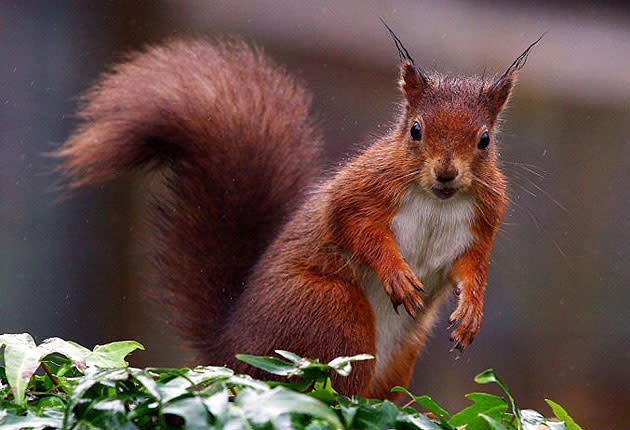Rewilding: New 3,000-acre landscape restoration will boost red squirrels and curlews in Yorkshire Dales

A new 3,000 acre rewilding project in the Yorkshire Dales will transform heavily grazed pasture into a biodiversity hotspot, restoring peatlands, creating new forest, and providing habitat for red squirrels, curlews and black grouse.
The project, called Wild Ingleborough, will cover an area from the River Ribble in the south west of the Dales national park up towards the Ingleborough mountain summit – the second highest peak in the park.
The WWF, Yorkshire Wildlife Trust and Natural England said the restoration of the landscape would showcase an “alternative future for the UK’s uplands”.
It aims to connect existing nature reserves in the area, creating larger, more joined up habitats for wildlife.
In some areas, vegetation will regenerate naturally, while in others the project will connect areas of woodland through tree planting.
“Over the next 12 months, the project will create around 40 hectares of new native woodland, with half created by planting 30,000 trees and the other half through natural regeneration,” the organisations said in a statement.
The species which the scheme could directly benefit include black grouse, red squirrel, cuckoos and curlew – of which there are currently only two pairs within the Ingleborough project area.
The project will also focus on plants such as juniper – the majority of which have suffered from disease in the Ingleborough area – as well as bird’s-eye primrose, globeflower and the nine species of fern found in the area.
Tanya Steele, chief executive at WWF, said: “Climate change and nature loss are two sides of the same coin – it’s vital that any efforts to safeguard our future and stabilise our climate have nature at their heart.
“The UK, as hosts of Cop26, can lead efforts to boost nature’s recovery, including transforming the way we use our land – with Wild Ingleborough a blueprint for restoration.
“Through this project, we want to show that a wilder world is a more stable one, with nature more resilient and able to adapt to change. Together with our partners and the local community, we hope to create a rich, diverse landscape for people and wildlife to thrive.”
The organisations spearheading the project said the intensive land use in recent decades had taken a “heavy impact” on the area, but they hope as well as restoring the habitats of plants and animals, the project will also help to protect against flooding, and improve the water and soil of the landscape.
They said the project will work closely with local landowners, farmers and other members of the community to share knowledge of nature conservation as well as low-intensity farming practices.
Academic monitoring of the project will be done by a team at the University of Leeds, which will provide records and evidence of what the project achieves, which it is hoped could inform policy to benefit rural communities and boost the recovery of nature in the UK.
Rachael Bice, chief executive at Yorkshire Wildlife Trust, said: “Ingleborough is one of the most iconic and cherished landscapes in our great county. The opportunity to support nature to flourish here is something we are incredibly proud to be involved in.
“By intervening carefully, we will see the landscape of the Dales transform. Restoring natural processes and communities of plants and animals will help to secure and enrich the future of Yorkshire’s residents and visitors too.”
The first phase of the project is already underway, with 300 hectares of land being restored with 3,000 native trees planted, including rowan, hawthorn and hazel, and hundreds of metres of drystone wall rebuilt.
“Ahead of the critical Cop26 climate summit in Glasgow this November, Wild Ingleborough provides a living example of how the UK’s uplands can be transformed,” the statement added.
Read More
UK’s plan to tackle climate crisis is ‘woeful’, government advisers warn
From peatland ‘timebombs’ to overheating homes: What we must do to take action on the climate crisis

 Yahoo Finance
Yahoo Finance 